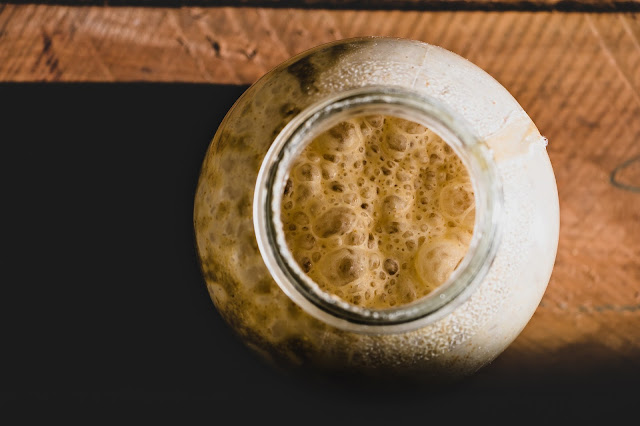My social media feeds during the Covid-19 Pandemic lockdowns were awash with furloughed friends indulging in hobbies and pastimes, new and old. A lot of these involved some sort of cooking and baking, with two things coming out on top: banana bread and sourdough.

|
| A jar of sourdough starter |
Sourdough bread is made from fermented (which is why it's sour) dough. The fermentation process takes time, so sourdough makers traditionally use a "starter", which is a fermented mixture of flour and water. A portion of this is taken away (and mixed with other ingredients) when a new loaf is needed, with the rest of the starter forming a standby culture which is regularly "refreshed" with further additions of flour and water.
Different bakers work with different ratios of flour and water comprising their starter and refreshments. This ratio is known in the sourdough trade as "hydration" and is expressed as a percentage calculated by dividing the mass of water by the mass of flour that it is mixed with (and then multiplying by 100).
Different recipes call for different hydrations again, and these can be achieved by altering the relative amounts of flour and water in your dough. This would be easy if everyone started with the same hydration: everyone would need to add the same quantities of flour and water to achieve the same result.
Recipes on the Du's Doughs blog all assume starting from an 80% hydration starter, but blogger Erica has written a post to help those who start with other hydration values to obtain the perfect consistency for each recipe too. Read the post at the link below:








No comments:
Post a Comment